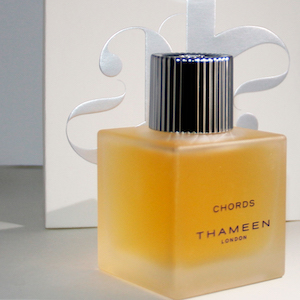The Universal Bauhaus Brand.
By Juan Pablo Rendón García
In your mind you see a shape, alongside which comes a word which flies through your head as fast as a shooting star, leaving behind thoughts, and light creating an impression
Slowly you become inspired as you see how these fleeting thoughts all link together, how every possible thing has an essence and then everything becomes pristine, your creative path is clear.
This process is something universal in the world of creativity. It is this process in any shape or form that brings thoughts and notions into ideas and then to fruition.
It is about creating an original thought that grows into an idea. Bauhaus, the movement was exactly that. A new way, of thinking to build a new path and vision towards the whole design ethic.
Bauhaus represents a unity of art; the linking of every piece for the creation of a uniformed cohesive expression of multiple individualities. A set of rules that created a cohesive visual internationally that was recognisable.

Bauhaus was a revolutionary school involving various forms of art, from architecture to design that developed during the Weimar Republic, which was the state that was formed shortly after the first world war in what is now Germany.
The school was founded by Walter Gropius who wanted to make art available for everyone, not only in the viewing of art but also in the creation of it.
However, its development came in a pivotal moment of history (the end of the first world war, with a devastated Germany) which made its views and approaches all the more unique. This school was different from all the others in regards to how it developed its creations because it had very pragmatic ideas that should be used across all the disciplines taught. It was revolutionary in its day.
But the school was closed by the Nazis in 1933, who considered the movement an enemy of the party. They condemned the school as a symptom of a disease spread by Jews and Communists that was contaminating the German body politic and also saw the leaders of Bauhaus as degenerates.
However, its genius survived and has been celebrated ever since.
Instead of its aesthetical appeal, it celebrated a very minimalistic design. In other words, it was about a stripped-back approach to use only what is needed.

There were basic rules included in the Bauhaus style and in a new book State Bauhaus in Weimar 1919-1923 by Lars Müller, shows in detail how these steps were taken and what every one of them meant as well as how to accomplish them. He also shares within the pages, some graphic examples at each specific point.
Some of these below highlight the steps involved.
The study of materials: which as its name suggests, explored what materials were going to be used for .i.e if you use wood, what is wood? See the material and dive deeper into what that material is.
Once decided on the material and knew as much as you could about it then you could begin the theory of form, which consisted in observing a shape, and then its representation, this would be both the material part of your work and the mental image of how you would want it to look.
After these first steps were done you would begin with curriculum, (the start of your project) this was the part in which the actual practical process was made, which would consist of:
1. Preliminary course: this first part was to go to the school and be taught how you could complete your project, to be instructed in the craft, after some time you had tests and only if you were successful you were admitted to one of the craft workshops.
2. The instruction in a craft: which lasted for three years, was a normal academic experience with tasks and tests, and after its completion, you got a diploma, which signified your mastery.
If you did the above and passed you could then get involved in practical classes on architecture. This part was named Instruction in Architecture, where students would be involved in buildings already under construction and served as a training period where the most important thing that would learnt; the fundamental unity of tone, colour, and form which was the ultimate goal of balancing the psychological and physical properties.

After all we can see that something which was so methodical, punctual and strict could lead to things that were enormously creative and quite beautiful. The works of the Bauhaus has remained a cornerstone of creative design, which at the same time has had critical acclaim throughout generations. As to why that might be, we could probably say that it’s a process in which you can add your imagination and your whole heart combined with discipline and order. Often a great set of ingredients for creativity.
Should the idea of a greater exploration on the Bauhaus, its origins, creative examples and a great explanation of how the Bauhaus works and the school requirements for the creation of its art, then have a look at the book State Bauhaus in Weimar 1919-1923 by Lars Müller, where you will have an in-depth insight into Bauhaus and its creations, an in-depth look at the school with a very specific timeframe, as well as graphic examples of the art school.
For more architecture stories click here and for more art and design posts click here
Staatliches Bauhaus in Weimar 1919–1923 by Lars Müller, Artbook Publishers





